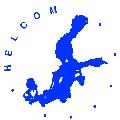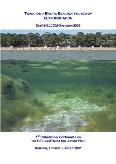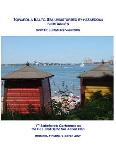
2nd Stakeholder Conference on the development of the HELCOM Baltic Sea Action Plan
6 March 2007, Helsinki, Finland
| The initial outline of an ambitious Baltic Sea Action Plan which would drastically reduce pollution to the Baltic Sea and restore its good ecological status was unveiled by the Helsinki Commission at an International Stakeholder Conference held 6 March in Helsinki, where up to 200 delegates, representing governments, businesses and academia of the coastal countries, as well as the European Union, major regional organisations and NGO’s met to discuss the new strategy and provide input to its further development. The major aim of the Conference was to review the plan’s outline and the proposed set of actions for each of the four segments of the plan dealing with eutrophication, pollution involving hazardous substances, maritime safety and accident response capacity, and habitat destruction and the decline in biodiversity. The programme of the Stakeholder Conference consisted of four thematic sessions on the proposed actions, targets and objectives for the main environmental issues, as well as a session on the economic analysis of the implementation of the strategy. The sessions were followed by a general roundtable discussion on the HELCOM Baltic Sea Action Plan with the participation of high-level government officials from the coastal countries, the European Union, and representatives of NGO’s. The draft plan received full support and endorsement from all major stakeholder groups. Participants welcomed the plan as a good framework for actions, but underlined that more detailed measures still need to be defined for the strategy. The Stakeholder Conference identified eutrophication as the major problem which will need more specific focus in the action plan, especially with regard to measures for agriculture. HELCOM assessments clearly show that agriculture is the main source of nutrient pollution entering the Baltic Sea and resulting in its eutrophication. The Conference also stressed the need to link the action plan to on-going programmes and processes addressed at global, European and national levels. This will ensure an integrated management of human activities and that environmental objectives are integrated to all policies and programmes implemented in the Baltic Sea region. During the discussions, participants agreed that the current strategy is not going to be the ultimate action plan; the plan needs to be evaluated on regular basis to check the status of implementation of the actions. Additionally, there will be a need to periodically review the effectiveness of the actions, targets and ecological objectives to make sure that the coastal countries will reach and maintain the good ecological status of the Baltic Sea. For this reason, the implementation mechanism and the review mechanism of the HELCOM Baltic Sea Action Plan were identified as two very important elements of the strategy to be further developed. Furthermore, the Stakeholder Conference found that the cost and the sources for financing the implementation of the actions need to be addressed in the action plan. The need to select the most cost-efficient measures in different regions to achieve the needed reductions was also emphasized. Conference participants backed the proposal that the action plan should contain an agreement on needed nutrient input reductions at sub-regional level, and a timetable for when to achieve these. Based on this, nutrient quotas should be established at sub-regional and country level, making up the foundation for a possible trading system. Participants also agreed that a Task Force could be established to evaluate the implementation of the plan and to consider by 2009 a possible trading scheme, including a decision on a testing period. This was already the 2nd Stakeholder Conference on the HELCOM Baltic Sea Action Plan. The kick-off Conference was held in March 2006 and discussed the general concept of the new strategy, as well as initialized its development process. At the Conference, HELCOM also presented four draft thematic assessments reports on eutrophication, biodiversity, maritime activities, and hazardous substances, which will serve as background information to the action plan. They contained a concise overview on the status of the Baltic marine environment. The outcome of the various sessions of the Conference was considered at the 28th annual HELCOM Meeting on 7-8 March, which agreed to feed it into the further process on the development of the strategy. The 2nd Stakeholder Conference and the annual Commission Meeting pave the way for the final stage in the development of the HELCOM Baltic Sea Action Plan. After a series of meetings to finalise the plan, the new environmental strategy will be adopted at the HELCOM Ministerial Meeting scheduled to take place on 15 November 2007 in Krakow, Poland. |
Draft HELCOM Overviews presented at the Conference
|
|
Introduction Mr. Mieczyslaw S. Ostojski, Chairman of HELCOM
|





